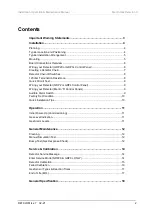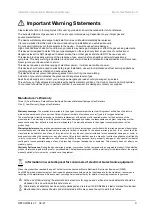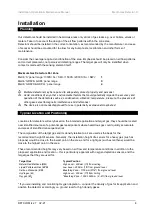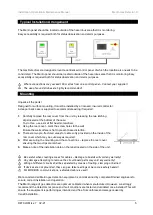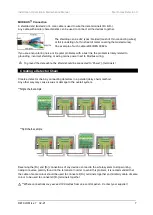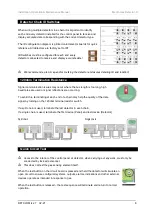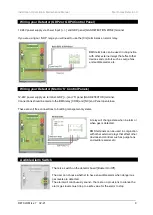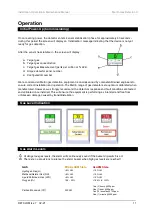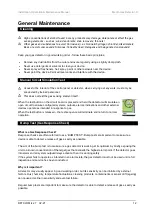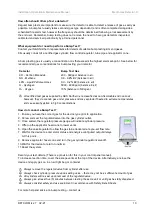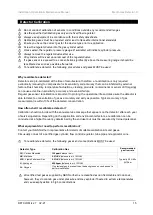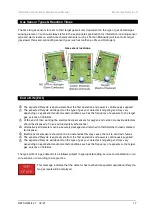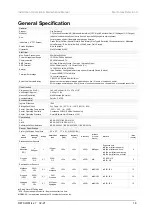
Installation, Operation & Maintenance Manual Merlin Gas Detector-X
DETX-IOM Iss: 7 02-21
4
Installation
Planning
Our detectors should be installed in hazardous areas only at risk of gas leaks e.g. over boilers, valves or
meters. Take in to account the design of the air flow patterns within the zone area.
Detectors should be installed in the correct orientation, as recommended by the manufacturer, and ease
of access should be accounted for to allow for any bump tests, recalibration and other forms of
maintenance.
Consider the coverage required and function of the area. Emphasis should be placed on airflow patterns
and correct placement, not perceived detecting ranges. The target gas will only be identified when
contact is made with the sensing element itself.
Maximum Gas Detectors Per Zone
Merlin ‘S’ panel range ‘1000S/ S+ / SW+ / 1500S / 2000S / S+ / SW+’
1
Merlin ‘GDP2 & GDP4’ panel range
3
Merlin ‘GDP2X & GDPX+’ panel range
4
Multiple detectors may be required to adequately protect property and persons!
Avoid conditions of any other environmental factors that could potentially impede the accuracy and
operation of the detectors such as; condensation; vibration; temperature, pressure, the presence of
other gases, electromagnetic interference and draft zones!
The device is not intended/approved for use in potentially explosive atmospheres!
Typical Location and Positioning
Locations for detectors will vary based on the intended application and target gas, they should be located
near identified sources of a potential gas leaks/pockets where hazardous gas could quickly accumulate
and areas of identified consequential risk.
The composition of the target gas and its density relative to air are used as the basis for the
recommended height of sensors. Generally, the installation height of a sensor for a heavy gas (such as
propane) would be close to the lowest point in the area, and for a light gas (such as methane) would be
close to the highest point in the area.
These recommended heights may vary based on air flow and temperature conditions in addition to the
proposed application and location – this is particularly apparent with oxygen depletion sensors, and the
target gas that they are used for.
Target Gas
Typical Position
Natural Gas/Methane (NG)
High Level - 300mm (1ft) from ceiling
Liquid Petroleum Gas (LPG)
Low Level - 300mm (1ft) from ground level
Carbon Monoxide (CO)
Breathing Zone - 1700mm (5ft 6”) from ground level
Hydrogen (H)
High Level - 300mm (1ft) from ceiling
Oxygen (O
2
)
*Breathing Zone - 1000-1500mm (3 - 5ft) from ground level
* If you are installing and monitoring Oxygen depletion – consider the density of gas for its application and
position the detector accordingly i.e. ground level for high density gases.


